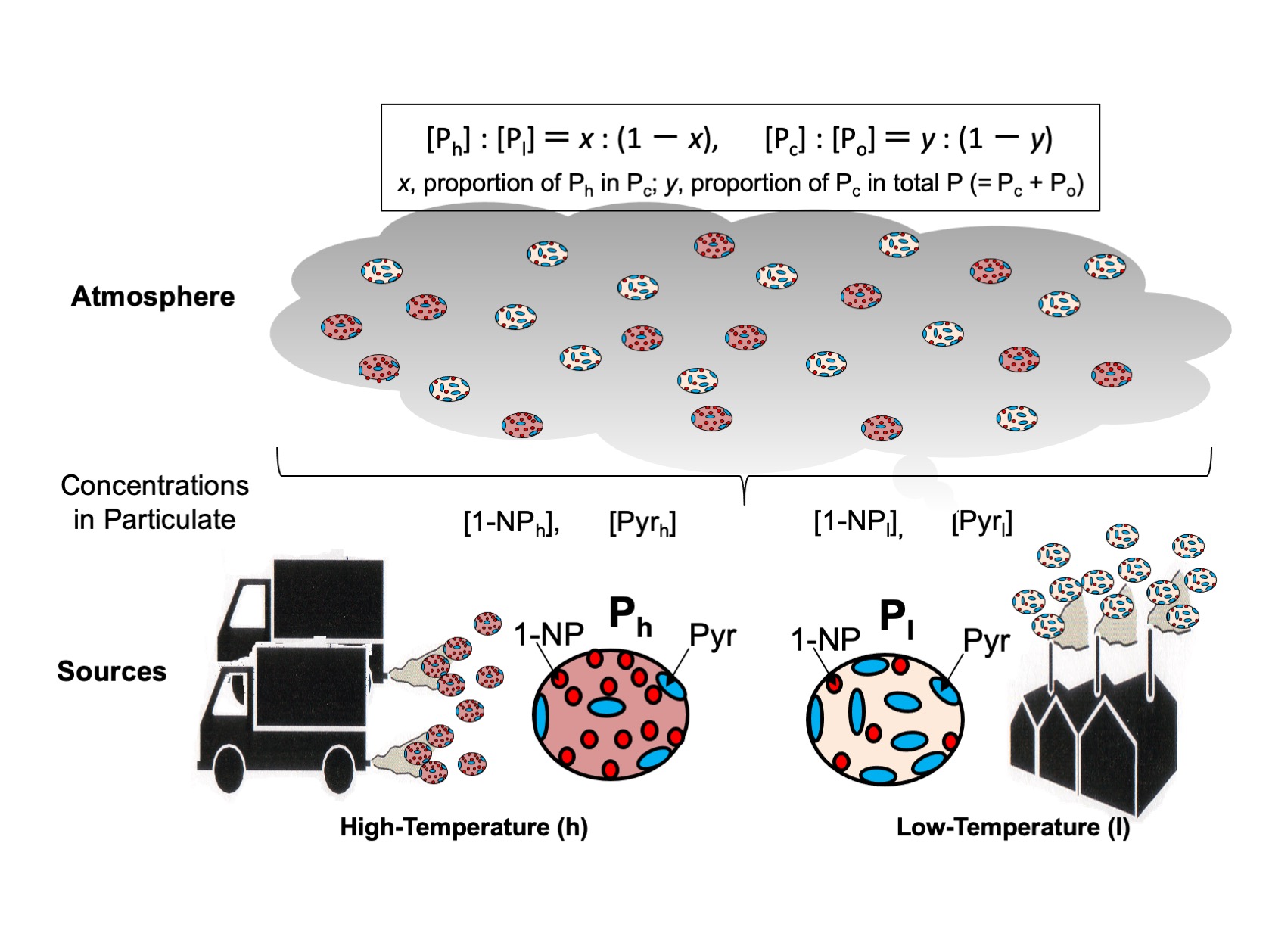Abstract:
Researchers from Kanazawa University have developed a new method to quickly and easily identify sources of combustion-derived particulate matter. The method involves determining the ratio between compounds formed at different combustion temperatures. By applying the new method, the researchers were able to track the changes in vehicle use over 15 years in three East Asian cities. These findings can be applied in the monitoring of urban particulate matter pollution and formation of effective pollution-reduction policies.
Kanazawa, Japan – A research team from Kanazawa University has developed a new method to help determine the proportions of particulate matter (PM) from different sources contributing to pollution in urban areas. Air pollution is a major concern in our urbanizing world and many Asian cities considerably exceed guideline standards for PM pollution set by the World Health Organization. In order to set appropriate policies to tackle the causes of PM pollution, it is necessary to first identify the pollution sources in each specific urban area.
“Many of the existing methods of source identification require large amounts of data from many different sets of observations and several monitoring sites,” says second author Ning Tang. “For this reason, it is often better to focus on changes in a pair of representative compounds, which can be used as a proxy for different sources of pollution and allow research in more detail across a city or in a specific time period.”
In this research, Kazuichi Hayakawa and his team proposed a new pair of representative chemicals: one relating to PM released from combustion at a low temperature (pyrene (Pyr)) and another relating to that released from combustion at a high temperature (1-nitropyrene (1-NP)). The ratio between 1-NP and Pyr is then used to calculate the contributions of different pollution sources such as automobiles, coal combustion, and biomass burning. Fig. 1 shows the outline of the method.
The method was tested for these different sources and was found to be able to clearly distinguish between PM pollution derived from automobiles, rice straw field burning, motorcycles, wood combustion, and coal combustion. The differences between gasoline and diesel combustion engines in automobiles were less clear. The new method was then applied to PM samples from two cities in Japan and another in China. A big difference of the concentration and source of PM between Kanazawa and Beijing is shown in Fig. 2.
“The new method was able to track the statistics in automobile use in the three cities and also assess the changes in source contributions that lead to some of the seasonal changes in PM pollution,” explains Hayakawa. “We were also able to show the clear differences in primary energy consumption between China and Japan.”
The new method was successful in estimating seasonal and long-term changes in the contribution of different sources to urban PM pollution and is simple and quick compared with many of the currently available approaches. Application of the new method could be useful in expanding the current monitoring of PM pollution in urban areas and assist in the formation of effective pollution-reduction policies.

Figure 1.
1-NP, 1-nitropyrene; Pyr, Pyrene; Pc, combustion-derived particulate; Po, non-combustion-derived particulate, Ph, particulate from combustion with high temperature (automobiles); Pl, particulate from combustion with low temperature (coal combustion).

Figure 2.
TSP, Total suspended particulate (= Po + Pc); Pc, Combustion-derived particulate.
Article
Calculating sources of combustion-derived particulates using 1-nitropyrene and pyrene as markers
Journal: Environmental Pollution
Authors: Kazuichi Hayakawa, Ning Tang, Akira Toriba, Edward G. Nagato
DOI: 10.1016/j.envpol.2020.114730
Funder
This research was financially supported in part by a Grant in Aid for Scientific Research (No. 17H06283) from the Japan Society for the Promotion of Science, Japan and the Environment Research and Technology Development Fund (5-1951) of the Environmental Restoration and Conservation Agency of Japan.



 PAGE TOP
PAGE TOP